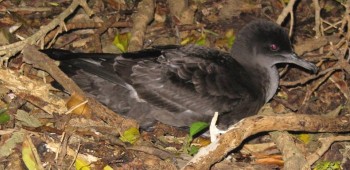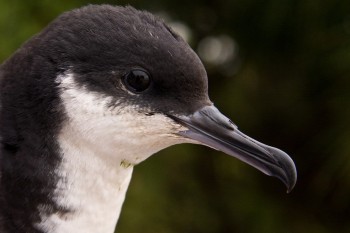Mark Miller (College of Science and Engineering and Centre for Tropical Environmental and Sustainability Science, James Cook University, Australia, Cairns, Queensland, Australia) and colleagues have published in the journal Marine Ecology Progress Series on Wedge-tailed Shearwaters Ardenna pacifica (globally Least Concern) foraging in association with tuna.
The paper’s abstract follows:
“Foraging with tuna is a well-documented seabird strategy, referred to as facilitated foraging. However, despite this behaviour being considered almost obligatory in nutrient-poor tropical waters, little data exist on its relative importance to individual colonies. Therefore, to examine facilitated foraging under different patterns of nutrient availability, we tracked wedge-tailed shearwaters Ardenna pacifica from 2 colonies, one tropical and one subtropical, situated in waters of contrasting productivity. Shearwater foraging behaviour was assessed relative to oceanographic covariates and predicted distributions for multiple tropical tuna species and age-classes, simulated by an existing ecosystem model (SEAPODYM). Shearwaters from both colonies undertook long trips to deep, pelagic waters close to seamounts and foraged most often at fronts and eddies. Micronektonic and adult tuna age classes were highly correlated in space. Predation between these tuna age classes represents a likely source of facilitated foraging opportunities for shearwaters. At broad spatio-temporal scales, shearwaters consistently foraged in areas with higher predicted adult skipjack and micronektonic tuna densities and avoided adult bigeye tuna. At finer spatio-temporal scales, dynamic ocean features aggregated tuna of all sizes. Enhanced tuna density at these locations increased the likelihood of shearwater foraging activity. Long trips in the tropics targeted oligotrophic waters with higher tuna densities. Long trips in the subtropics targeted enhanced productivity, but in some years shifted to target the same oligotrophic, tuna-dense waters used by tropical conspecifics. We conclude that facilitated foraging with tuna is consistently important to the tropical breeding population and becomes increasingly important to the subtropical population in years of low marine productivity.”

Wedge-tailed Shearwaters
Reference:
Miller, M.G.R., Carlile, N., Scutt Phillips, J., McDuie, F. & Congdon, B.C. 2018. Importance of tropical tuna for seabird foraging over a marine productivity gradient. Marine Ecology Progress Series 586: 233-249. doi.org/10.3354/meps12376.
John Cooper, ACAP Information Officer, 22 January 2018

 English
English  Français
Français  Español
Español 


